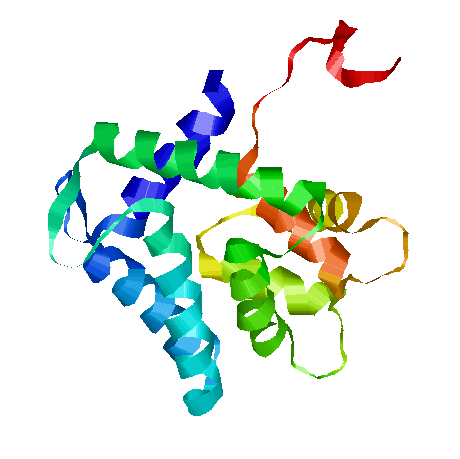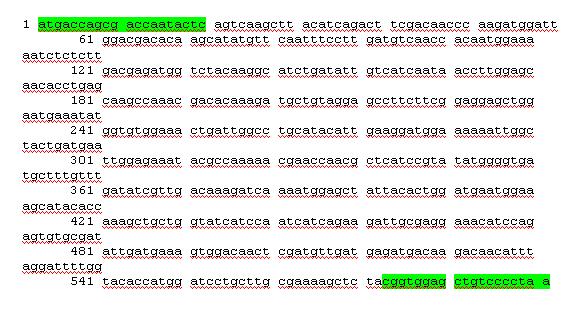Team:Valencia/Parts/Characterization
From 2009.igem.org
(→General information) |
|||
| Line 1: | Line 1: | ||
{{Template:Valencia09iGEM2}} | {{Template:Valencia09iGEM2}} | ||
| + | |||
| + | <div style="position:relative; top:-5px; left:70px; width:700px" align="justify"> | ||
==General information== | ==General information== | ||
| - | AEQ is a gene which encodes for aequorin, our luminiscent protein. | + | <span style="color:black; align:justify; font-size:11pt; font-family:Verdana">AEQ is a gene which encodes for aequorin, our luminiscent protein. |
[[Image:aequorin.GIF|200px|center]] | [[Image:aequorin.GIF|200px|center]] | ||
| - | It's a photoprotein isolated from luminescent jellyfish (like various Aequorea species like Aequorea victoria) and a variety of other marine organisms. It was originally isolated from the coelenterate by Osamu Shimomura, and it has been used as a reporter gene in different superior eukariotes. Nowadays, there are different aequorin types, depending on the target organism. <br> | + | <span style="color:black; align:justify; font-size:11pt; font-family:Verdana">It's a photoprotein isolated from luminescent jellyfish (like various Aequorea species like Aequorea victoria) and a variety of other marine organisms. It was originally isolated from the coelenterate by Osamu Shimomura, and it has been used as a reporter gene in different superior eukariotes. Nowadays, there are different aequorin types, depending on the target organism. <br> |
| - | The aequorin which we are working with has been introduced in our yeasts by a plasmid called pEVP11/AEQ, wich encondes aequorin sequence showed below. Cells containing this plasmid are able to sintetize apoaequorin, the apoprotein of 22 kDa, and keep it in their citoplasm. So, that apoprotein can't produce luminiscence by itself, but when it binds to its cofactor coelenterazine, in presence of Ca2+, full aequorin emits light.<br> | + | <span style="color:black; align:justify; font-size:11pt; font-family:Verdana">The aequorin which we are working with has been introduced in our yeasts by a plasmid called pEVP11/AEQ, wich encondes aequorin sequence showed below. Cells containing this plasmid are able to sintetize apoaequorin, the apoprotein of 22 kDa, and keep it in their citoplasm. So, that apoprotein can't produce luminiscence by itself, but when it binds to its cofactor coelenterazine, in presence of Ca2+, full aequorin emits light.<br> |
| - | The two components of aequorin reconstitute spontaneously, forming the functional protein. The protein bears three EF-hand motifs that function as binding sites for Ca2+ ions. When Ca2+ occupies such sites, the protein undergoes a conformational change and converts through oxidation its prosthetic group, coelenterazine, into excited coelenteramide and CO2 (as we explain in Wetlab overview). As the excited coelenteramide relaxes to the ground state, blue light (wavelength = 469 nm) is emitted.<br> | + | <span style="color:black; align:justify; font-size:11pt; font-family:Verdana">The two components of aequorin reconstitute spontaneously, forming the functional protein. The protein bears three EF-hand motifs that function as binding sites for Ca2+ ions. When Ca2+ occupies such sites, the protein undergoes a conformational change and converts through oxidation its prosthetic group, coelenterazine, into excited coelenteramide and CO2 (as we explain in Wetlab overview). As the excited coelenteramide relaxes to the ground state, blue light (wavelength = 469 nm) is emitted.<br> |
==Sequence== | ==Sequence== | ||
| - | Aequorin sequence is (primer binding sites are underlined in green):<br> | + | <span style="color:black; align:justify; font-size:11pt; font-family:Verdana">Aequorin sequence is (primer binding sites are underlined in green):<br> |
[[Image:Aeqseqval.JPG|500px|center]] | [[Image:Aeqseqval.JPG|500px|center]] | ||
Revision as of 12:02, 17 October 2009
General information
AEQ is a gene which encodes for aequorin, our luminiscent protein.
It's a photoprotein isolated from luminescent jellyfish (like various Aequorea species like Aequorea victoria) and a variety of other marine organisms. It was originally isolated from the coelenterate by Osamu Shimomura, and it has been used as a reporter gene in different superior eukariotes. Nowadays, there are different aequorin types, depending on the target organism.
The aequorin which we are working with has been introduced in our yeasts by a plasmid called pEVP11/AEQ, wich encondes aequorin sequence showed below. Cells containing this plasmid are able to sintetize apoaequorin, the apoprotein of 22 kDa, and keep it in their citoplasm. So, that apoprotein can't produce luminiscence by itself, but when it binds to its cofactor coelenterazine, in presence of Ca2+, full aequorin emits light.
The two components of aequorin reconstitute spontaneously, forming the functional protein. The protein bears three EF-hand motifs that function as binding sites for Ca2+ ions. When Ca2+ occupies such sites, the protein undergoes a conformational change and converts through oxidation its prosthetic group, coelenterazine, into excited coelenteramide and CO2 (as we explain in Wetlab overview). As the excited coelenteramide relaxes to the ground state, blue light (wavelength = 469 nm) is emitted.
Sequence
Aequorin sequence is (primer binding sites are underlined in green):
 "
"

